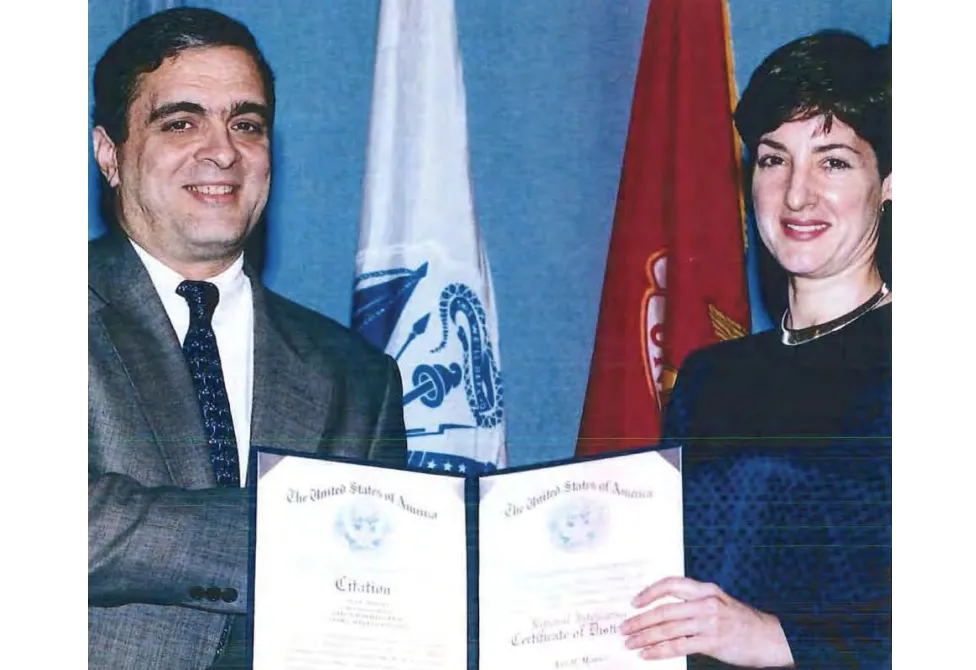Ana Belén Montes poses for a photo shortly after her release from a 20-year prison sentence. Her brown hair is streaked with grey, and she is approximately 66 years old.
There was little evidence that Montes had spent years as a covert Cuban spy embedded deep within the US government. Or that she was formerly regarded as one of the most dangerous intelligence operators targeting the country.
That, according to experts, is what made her the ideal spy.
Ana Montes was caught on September 21, 2001, and was later found guilty of plotting to spy on the United States.
US Intelligence Searching For Decades
For nearly a decade, US intelligence authorities had been looking for a Cuban mole inside the government, but determining who was sending sensitive information to the Cubans proved to be a herculean effort.
“It truly is a needle in a haystack,” said Pete Lapp, a former FBI agent who, along with his partner, Steve McCoy, was part of the team that proved Montes was a Cuban spy.
Lapp and his team were tasked with finding and eliminating the mole. To complicate matters further, Mr. Lapp claimed that the Cubans also attempted to conceal Montes’ gender by implying that the spy was a man with high-level clearance, thus broadening the pool of prospective targets.
“It would have been a lot easier if we had known we were looking for a woman,” he admitted.
The FBI was looking for a lady and a top US intelligence official in Cuba and Central America.
The Cuban Queen
Cuba played a long game with Montes. Mr. Lapp says that she was asked to spy for them before graduating from graduate school. So, she became an “operative of the Cuban intelligence service” and joined the US Defense Intelligence Agency.
“She did an excellent job of being near-perfect, and everything she accomplished as an analyst simply served to build a wall of security around her,” he explained.
Ana Montes moved up in the US intelligence services. Before becoming a senior intelligence operative studying Cuba, she first worked on a portfolio for El Salvador and Nicaragua. Her expertise earned her the title “Queen of Cuba” within the agencies.
She also sent some of the most sensitive information about the country to a foreign government that was against it for more than 17 years.
On The Run for 17 Years
“One of the reasons I think she never got caught was she primarily memorized the knowledge that she took away,” said Jim Popkin, author of Code Name Blue Wren, which chronicles Montes’ climb through the ranks and eventual capture.
“She had a day job where she sat silently, studiously, and memorized as many sensitive documents as possible. Her nocturnal duty was to go home, type it up on a Toshiba laptop, encrypt it, and send it to her handler.”
Instead of working for money, Montes eventually admitted to investigators that she spied on the US because she opposed her government’s interventionist actions in Central America and Cuba.
Mr. Popkin said, “She was especially dangerous because she told the real names of American spies in Cuba.”
That information alone could have put lives in danger, but Montes also revealed the existence of a multibillion-dollar stealth satellite used by the US to spy on Russia, China, and Iran.
“That’s why intelligence officers call her one of the most damaging spies in American history and, in my opinion, the most damaging female spy we’ve ever had,” Mr. Popkin added. By 2000, intelligence agencies suspected Montes of being a spy, and Mr. Lapp and his team narrowed down on her as a suspect.
An International Spy
“Let’s not focus on catching her in the act of spying,” I insisted. “Let us first ensure that we have the proper individual,” Mr. Rapp stated.
After looking for the mole for years, Lapp and his team finally found him over Memorial Day weekend in 2001. They went to Montes’ house and found a laptop under her bed with secret information from the 1990s.
“I thought, holy [expletive], holy [expletive],” said Mr. Lapp, whose inquiry will be detailed in the upcoming book Queen of Cuba.
Montes receives a National Intelligence Certificate of Distinction from CIA Director George Tenet.
Leading the compartmentalized life of a spy meant lying not just to the nation’s highest intelligence organizations but also those closest to her, including her family.
The Cuban Queen
Her sister, Lucy, was one of four close family members who worked with the Federal Bureau of Investigation. The day Montes was caught, the rest of the world discovered she was a spy for the Cuban government.
Mr. Popkin talked to the family for his book, and he said that the family’s anger at her betrayal was mixed with relief when she was sent to prison.
“It did give [Lucy] some solace just to understand a little bit more about her sister and why their once-close connection had deteriorated over the years,” he added.
Ana Montes was released on January 6 after serving most of her 25-year term. Montes said she wishes to live a “quiet and private existence” now that she is out of prison and back in Puerto Rico. However, within hours of her release, Montes stated that she was still thinking about Cuba.
“I encourage anyone who wishes to focus on me to do so on significant subjects, such as the major problems confronting the Puerto Rican people or the United States’ economic embargo on Cuba,” she said in a statement provided to BBC News by her lawyer, Linda Backiel.
“Who has asked the Cuban people in the previous 60 years if they want the United States to enforce a strangling embargo that causes them to suffer?”
But Montes’ release was a setback for Mr. Lapp and the men and women who had worked to bring her to justice for years.
“I knew this day was coming, but that doesn’t make it any less painful,” he added.
SOURCE – (BBC)











